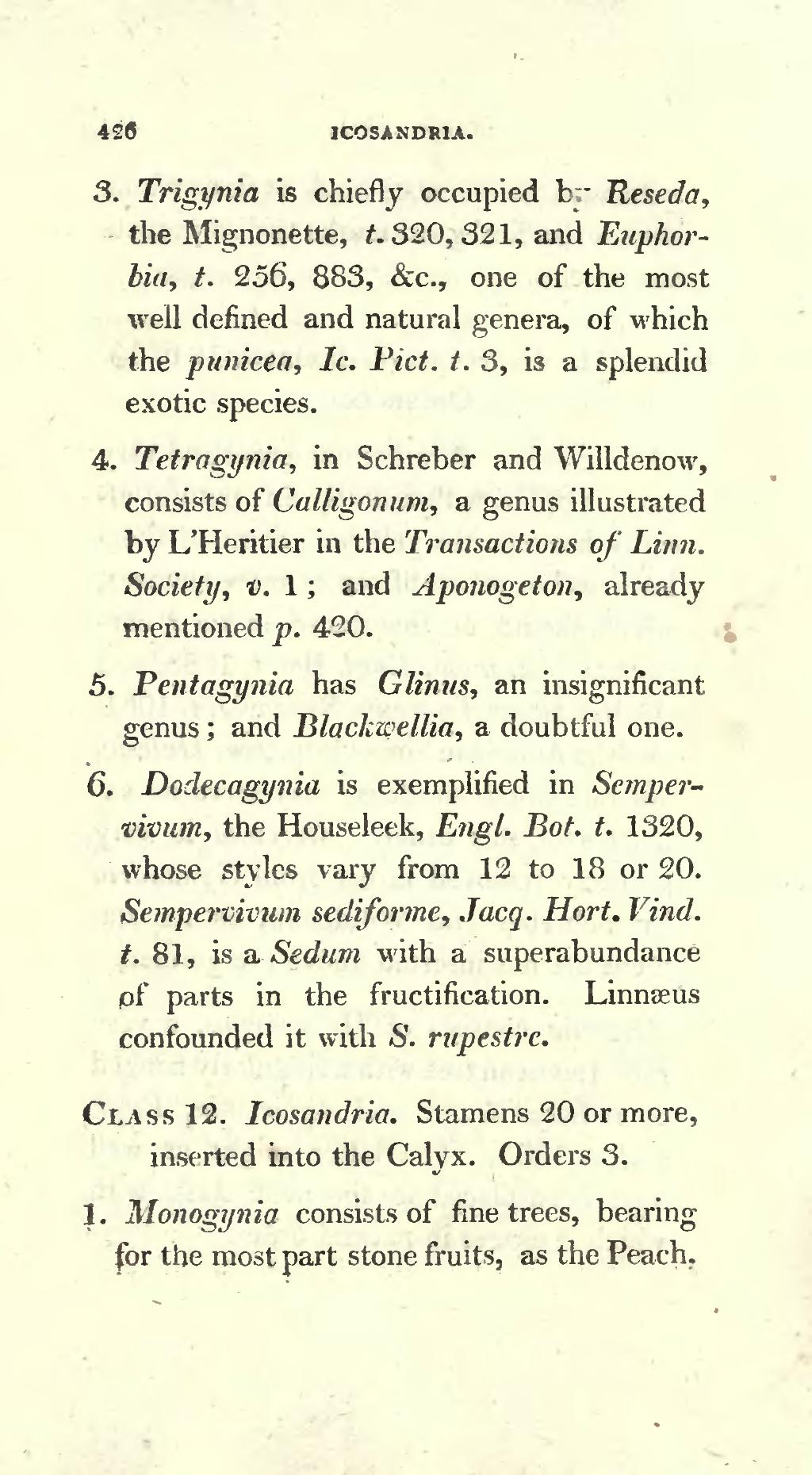3. Trigynia is chiefly occupied by Reseda, the Mignonette, t. 320, 321, and Euphorbia, t. 256, 883, &c., one of the most well defined and natural genera, of which the punicea, Ic. Pict. t. 3, is a splendid exotic species.
4. Tetragynia, in Schreber and Willdenow, consists of Calligonum, a genus illustrated by L'Heritier in the Transactions of Linn. Society, v. 1; and Aponogeton, already mentioned p. 420.
5. Pentagynia has Glinus, an insignificant genus; and Blackwellia, a doubtful one.
6. Dodecagynia is exemplified in Sempervivum, the Houseleek, Engl. Bot. t. 1320, whose styles vary from 12 to 18 or 20. Sempervivum sediforme, Jacq. Hort. Vind. t. 81, is a Sedum with a superabundance of parts in the fructification. Linnaeus confounded it with S. rupestre.
Class 12. Icosandria. Stamens 20 or more, inserted into the Calyx. Orders 3.
1. Monogynia consists of fine trees, bearing for the most part stone fruits, as the Peach.
